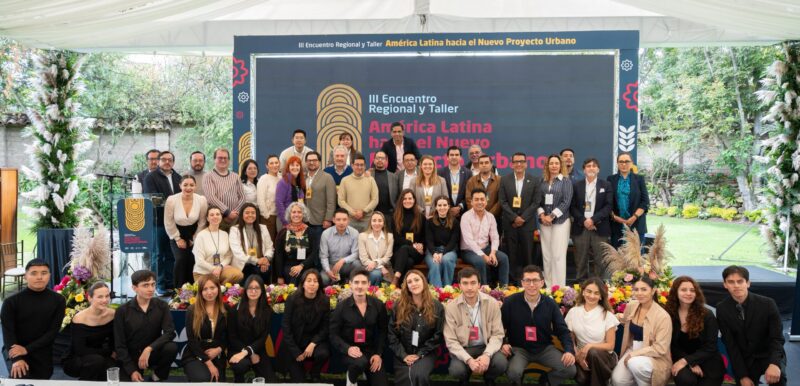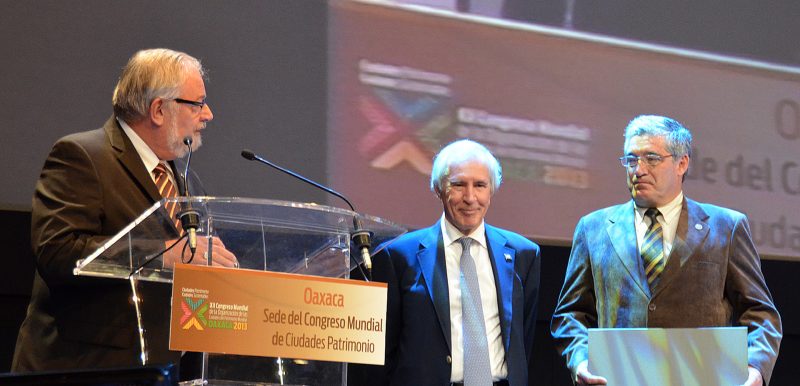Cuenca, Ecuador
General Information
Administrative status
Capital of the province of Azuay
Historic Centre of Santa Ana de los Rios de Cuenca
Registration Year
1999
Historical function
Illustrates the implantation of the principles of urban planning of the Renaissance in the Americas and the fusion of the different societies and cultures of Latin America
Location and site
Santa Ana de los Ríos de Cuenca is set in a valley surrounded by the Andean mountains in the south of Ecuador. This inland colonial town (entroterra), now the country’s third city, was founded in 1557 on the rigorous planning guidelines issued 30 years earlier by the Spanish king Charles V. Cuenca still observes the formal orthogonal town plan that it has respected for 400 years. One of the region’s agricultural and administrative centers, it has been a melting pot for local and immigrant populations. Cuenca’s architecture, much of which dates from the 18th century, was ‘modernized’ in the economic prosperity of the 19th century as the city became a major exporter of quinine, straw hats, and other products.
Urban morphology and Historical reference
Located in the heart of the Andean mountains, the town of Cuenca is entrenched in a valley irrigated by four rivers: Tomebamba, Yanuncay, Tarqui, and Machangara. Over time, this location has favored close contact with the natural environment. The Historic Centre of Santa Ana de los Rios de Cuenca includes the territory that was occupied by the town of Cuenca until the first half of the 20th century, as well as the archaeological site of Pumapungo and the corridors that include the ancient access routes to the town.
The Historic Centre of Santa Ana de los Rios de Cuenca is a remarkable example of a planned inland Spanish town (entroterra) that bears witness to the interest given to the principles of Renaissance urban planning in the Americas. Founded in 1577 according to the guidelines issued thirty years earlier by the King of Spain, Charles V, it has preserved over four centuries its original orthogonal plan.
An Indian community was in existence at the time of the arrival of the Spanish, (Inca-Canari); from this time on the character of the town of Cuenca was determined. The urban layout and the townscape of its historic center, corresponding to colonial towns located in the interior of the land with an agricultural vocation, clearly bear witness to the successful fusion of the different societies and cultures of Latin America.
The urban fabric of the Historic Centre of Santa Ana de los Rios de Cuenca comprises a system of parks, squares, atriums, churches, and other public spaces. Around the Plaza Mayor (Park Abdon Calderon), the three powers of society are always present: political with the town hall and the Governor’s Office, religious, with its two cathedrals opposite one another, and the judiciary with the Law Courts. Its paved streets are wide and sunlit. Moreover, the simple colonial houses have often been transformed into more important residences, especially during the period of relative economic expansion due to the production and exportation of quinine and straw hats (19th century). This resulted in a specific architecture that integrated the diverse local and European influences.
Registration criteria
Criterion (ii): Cuenca illustrates the perfect implantation of the principles of urban planning of the Renaissance in the Americas.
Criterion (iv): The successful fusion of the different societies and cultures of Latin America is symbolized in a striking manner by the layout and townscape of Cuenca.
Criterion (v): Cuenca is an outstanding example of a planned inland Spanish colonial town.
Photos
News
24 July 2018
Mayors&Heritage: Mr. Marcelo Cabrera, Mayor of Cuenca (Ecuador)
Cuenca, Ecuador
Mayors&Heritage
21 November 2013
Cuenca, Ecuador – The city that won the 3rd edition of the Jean-Paul L’Allier Prize for Heritage
Cuenca, Ecuador
Contact
Sr. Cristian Eduardo Zamora Matute
Alcalde de Cuenca
Gobierno Autónomo Descentralizado Municipal del cantón Cuenca - Ecuador
Edificio de la Alcaldía, Bolívar 7-67 y Borrero, Primer Piso Alto
Cuenca, Azuay, Ecuador
1010202
+ (593-7) 4134900
[email protected]
Mgst. Juan Felipe Ochoa Mogrovejo
Director de Relaciones Internacionales y Cooperación
Gobierno Autónomo Descentralizado Municipal del cantón Cuenca - Ecuador
Edificio de la Alcaldía de Cuenca, Bolívar y Borrero (6to piso)
Cuenca, Azuay, Ecuador
1010202
+ (593-7) 413-4900 ext. 1694
[email protected]







